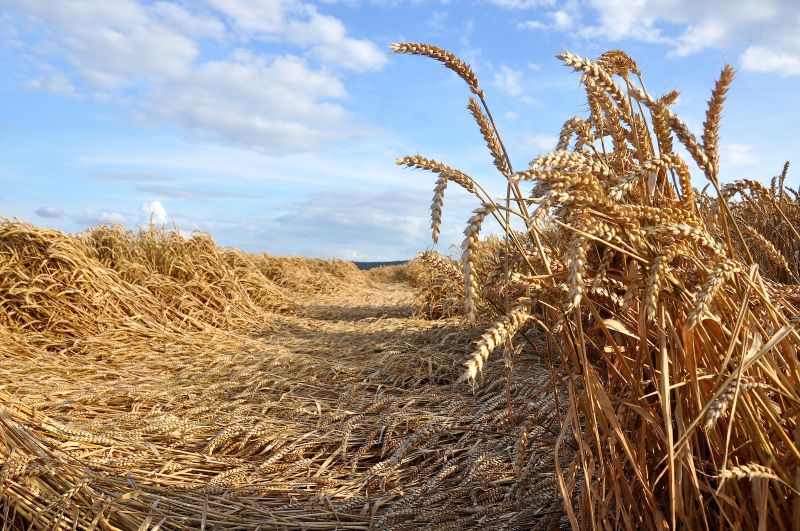
Combined effects of early sowings and good crop establishment have set the scene for generally high lodging risks in winter cereals this season, according to a leading independent expert.
According to Dr Pete Berry of ADAS, the combination of the mild autumn and many crops being drilled in September has led to thick growth in cereals, setting crops up for two key lodging risks – poor anchorage due to tightly-packed plants having limited space for root spread; and weak stems due to large numbers of competing tillers.
“What determines anchorage strength is how widely-spaced plants are,” explains Dr Berry. “Crops that establish well and that are drilled at a high seed rate will have smaller root anchorage systems. Crops with a dense number of tillers – either through close plant spacing or lots of tillers per plant – will have weaker stems.”
Additionally, Dr Berry says frost heave in soils can reduce root anchorage, while waterlogging can also reduce crown root growth.
In response, he suggests that growers consider cultural and chemical practices for lodging management, such as rolling in suitable conditions to consolidate the soil around roots, and applying plant growth regulators (PGRs). The first nitrogen fertiliser application can also be delayed in winter wheat to try to thin out tillers where necessary, he says, but there is less scope for this in barley as this can damage yield potential, he stresses.
Rolling must also not be done after GS30 otherwise it could damage the growing tip, and PGRs should be applied as a split programme and in mixtures to maximise efficacy, he points out. A mixture of Moddus + chlormequat is a good combination, he notes.
“Two splits at T0 and T1 are fine for early-type PGRs like Moddus. We’ve got evidence that splitting gives bigger effects. And mixing because sometimes conditions may mean one active ingredient works better than another.”
Syngenta field technical manager, Iain Hamilton, agrees with the importance of planning a programme to manage lodging, rather than reacting later and thinking it can be managed with a single PGR treatment.
“A Moddus programme is especially useful in these types of season,” says Mr Hamilton, “because it can be used to specifically target poor rooting and weak stems, as well as targeting crop height.
“The biggest positive effects on rooting are from applying Moddus at T0, while a T1 application is more geared to stem strength. So our general guidance in winter wheat and winter barley is to consider an appropriate dose of Moddus + chlormequat at both timings, or straight Moddus can be used for the T0 application in this programme if preferred. By targeting all causes of lodging it improves your chance of keeping the crop standing,” he adds.
“Later on, you can check whether a follow-up PGR at growth stage 37 using ethephon-based chemistry is needed or not.
“Remember, lodging doesn’t just reduce yield and grain quality, but can also delay harvest and add significantly to costs by increasing the need for grain drying,” Mr Hamilton adds.
